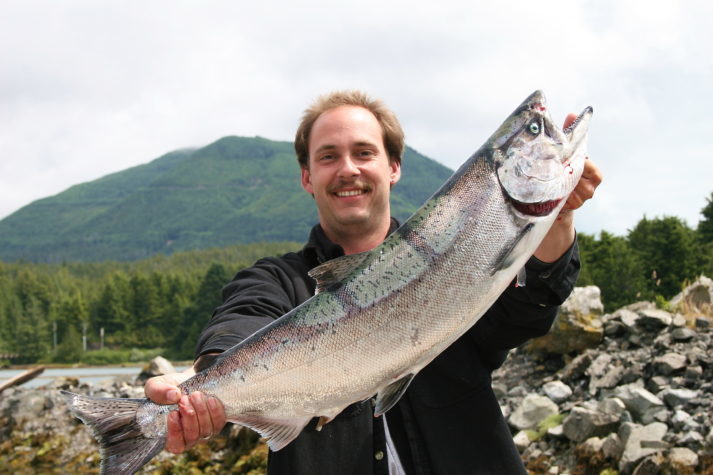Salmon run nearly year-round in Oregon. Knowing which kinds of salmon are running and when they are running can help you plan your next salmon fishing expedition. Having a basic idea of which salmon you’re looking to catch can help with everything from location to bait.
Salmon fishing in Oregon is easier when you know what kind of salmon you’re looking for. Learn the salmon species of Oregon, and then plan your trip!
Chinook Salmon
Also known as the Blackmouth salmon or King salmon, the Chinook salmon spends the majority of its existence in the ocean before making its way to fresh water for spawning. Most adult
Chinook salmon in Oregon find their way to the state’s rivers from early spring through winter with a regular lull sometime during the summer. Spring Chinook salmon make their way into the Columbia River around February.
Anglers can distinguish the different Chinook salmon populations in the Oregon river basin based on their seasonal spawn runs, typically divided into fall and spring Chinook salmon. Spring Chinook salmon spawn from August until early November and fall Chinook salmon spawn from October until early March. All adult Chinook salmon pass away about two weeks after they have spawned.
Chum Salmon
Chum or Dog salmon rear in the Pacific and Arctic Oceans for most of their development, later reaching Oregon’s rivers for fresh water for spawning. Like Chinook salmon, all adult Chum salmon will spawn and then pass away two weeks later. Adults go into spawning streams ready to mate and spawn promptly before dying, and most Chum salmon spawning runs are short distances. They tend to be good swimmers but poor jumpers and cannot make it over barriers other salmon species traverse. Juvenile Chum salmon do not tolerate fresh water for extended periods and promptly migrate to ocean waters after appearing. Chum salmon mature within two to six years and can reach 40 pounds in size.
Coho Salmon
Coho or Silver salmon, like Chinook and Chum salmon, spend the majority of their time in the Pacific Ocean and move to freshwater streams for spawning. Mature Coho salmon return to fresh water in autumn for a spawning period that usually extends from November to February. All adult Coho salmon die after two weeks of spawning, a common trait among the different Oregon salmon species. Coho salmon can spend a few weeks or even months in fresh water before they spawn; this depends on how long it takes to reach their spawning grounds.
Juvenile Coho salmon will usually spend a single summer and a single winter in freshwater, but some may linger for a few more years, choosing to remain in the area’s coldest rivers. After about one year following emergence, most will migrate to the ocean. Most Coho salmon mature after about three years, and it is rare to catch them north of the United States border with Canada. They commonly appear along the Oregon and California coastline, south of their spawning streams.
Kokanee/Sockeye Salmon
Unlike the other species of Oregon salmon on this list, the Kokanee, or Sockeye, salmon requires a lake for part of its lifecycle. Kokanee spawning may occur in lake beds or stream gravels, but juvenile Kokanee always migrate to lakes after emergence. If you’re salmon fishing in Oregon’s river basins, you can kind Kokanee in the lower Columbia River Basin and the Snake River Basin.
When it comes to salmon fishing, Oregon offers anglers of all kinds a great deal of choice when it comes to the best times to fish and the best places to fish.
Sources:
https://www.dfw.state.or.us/species/fish/index.asp